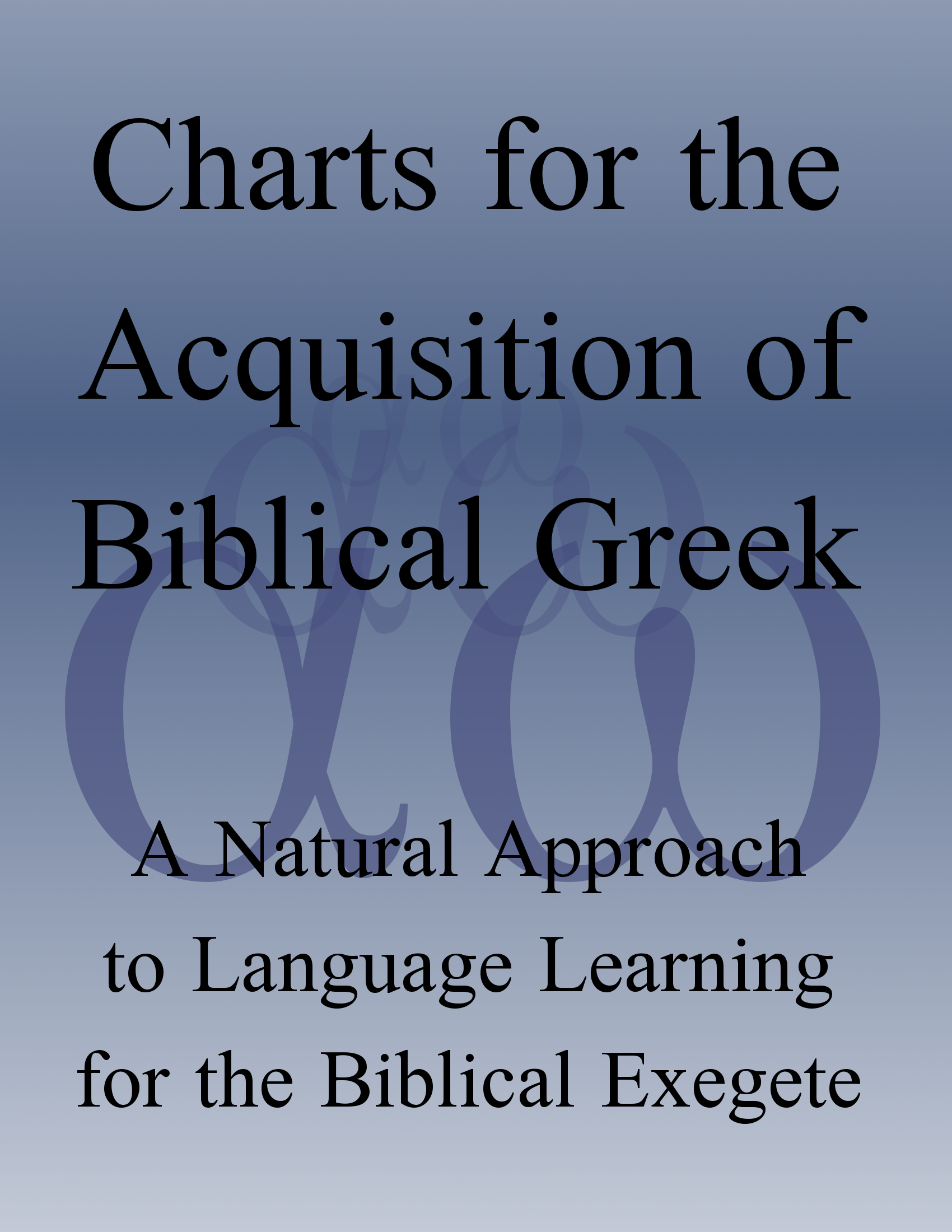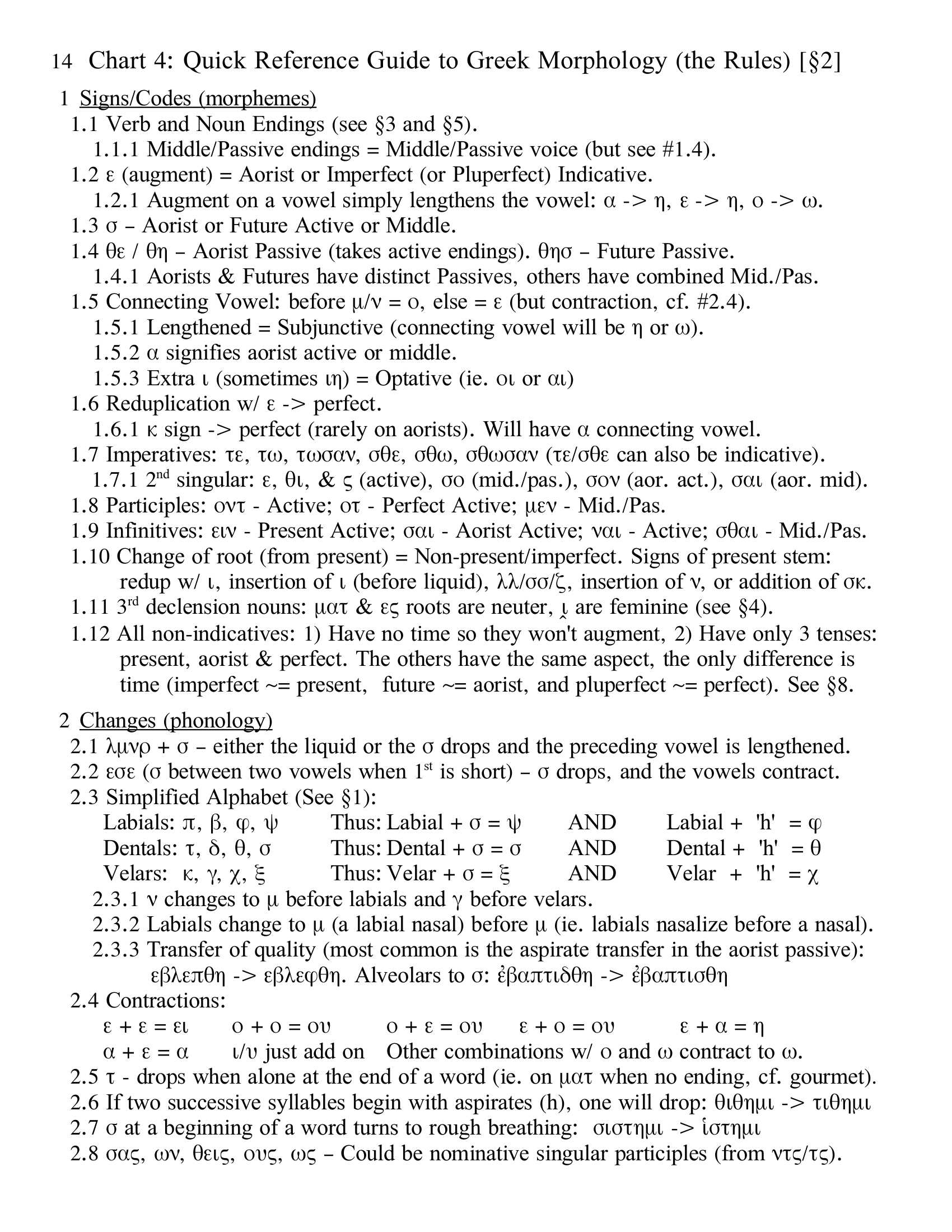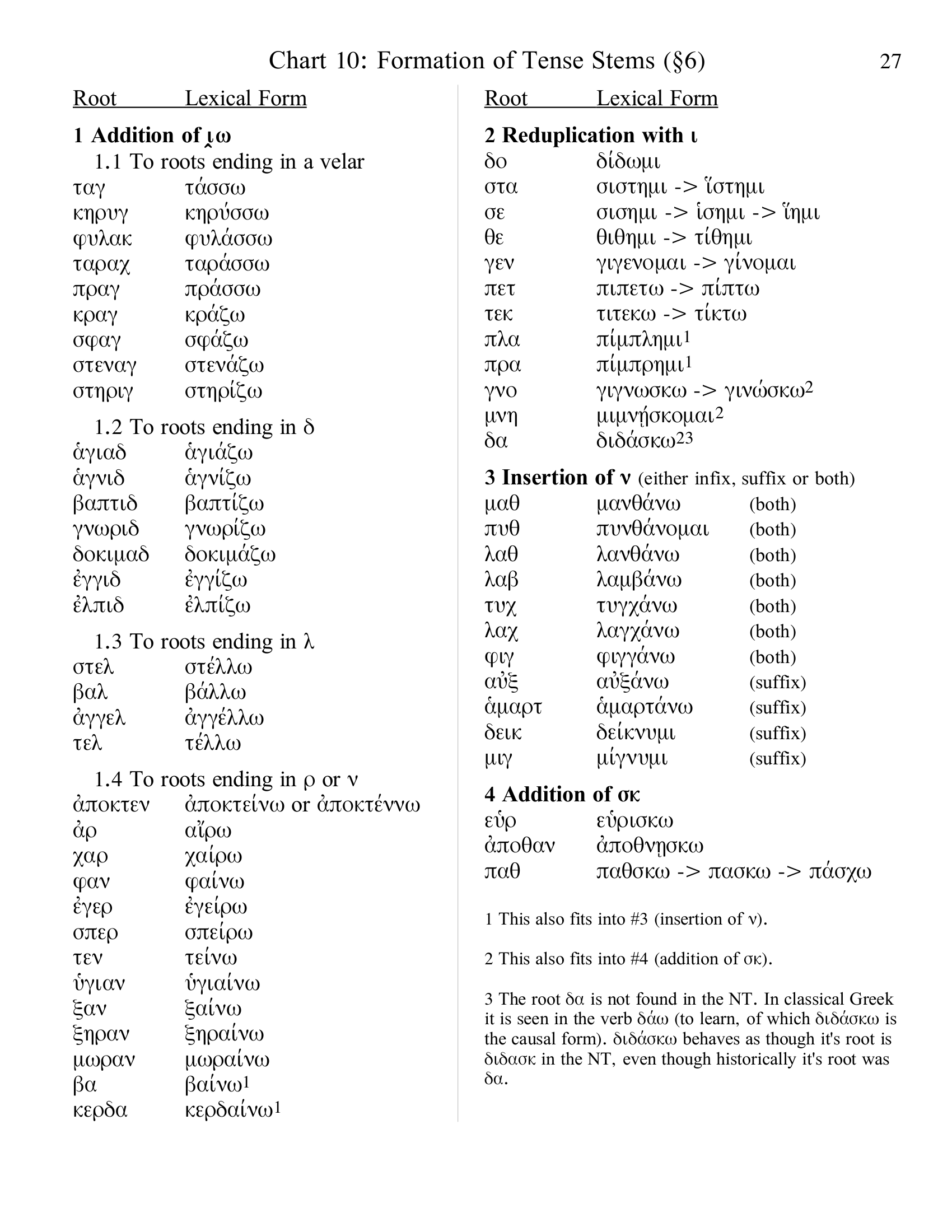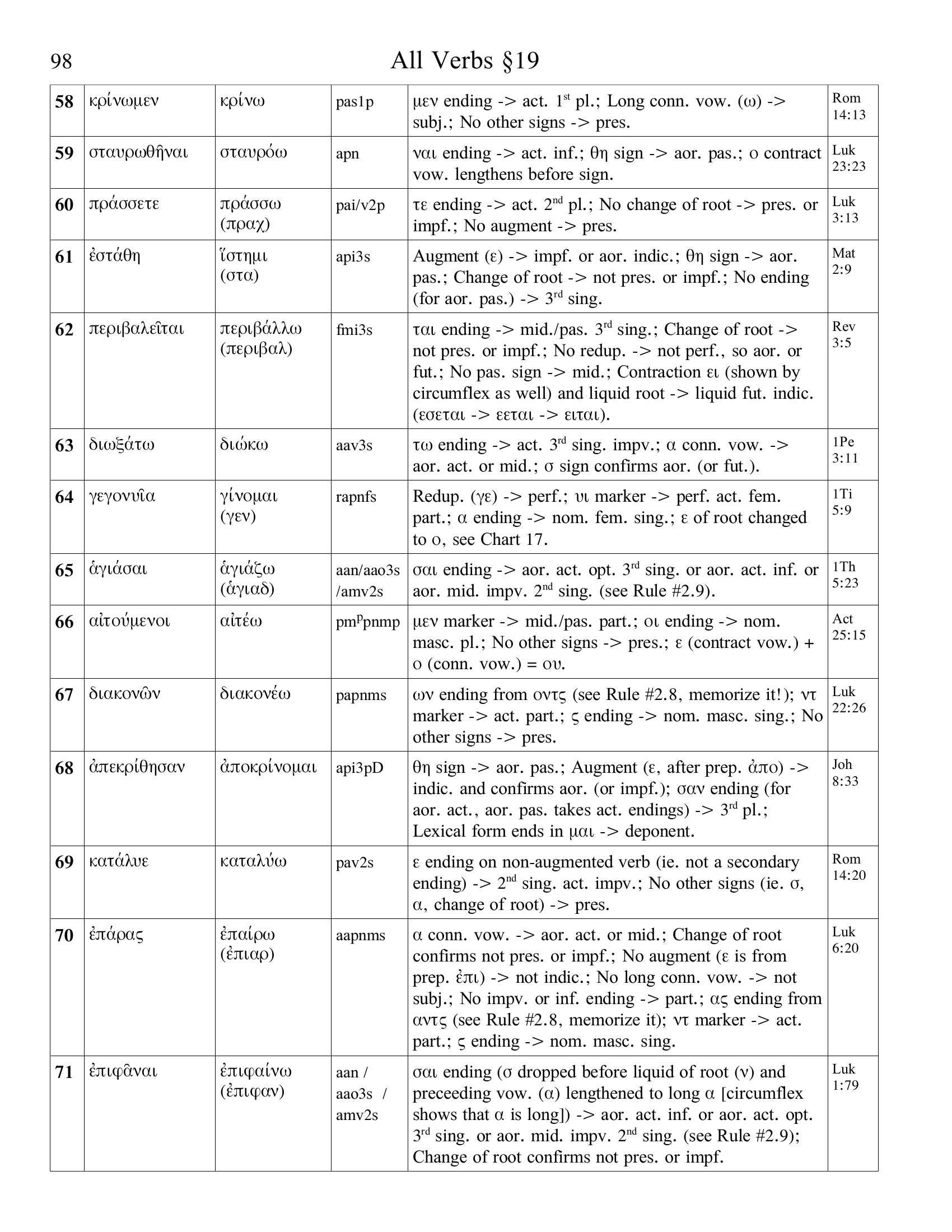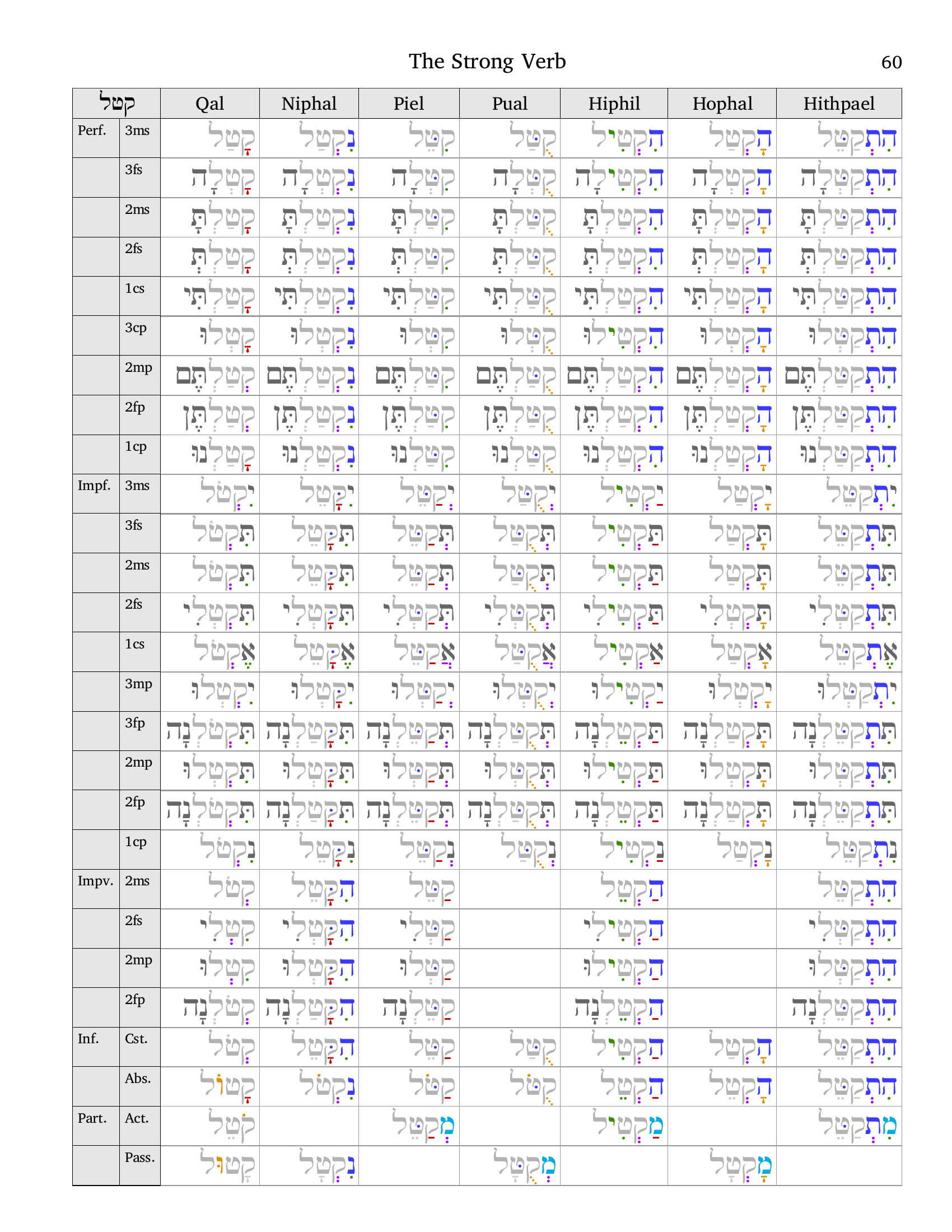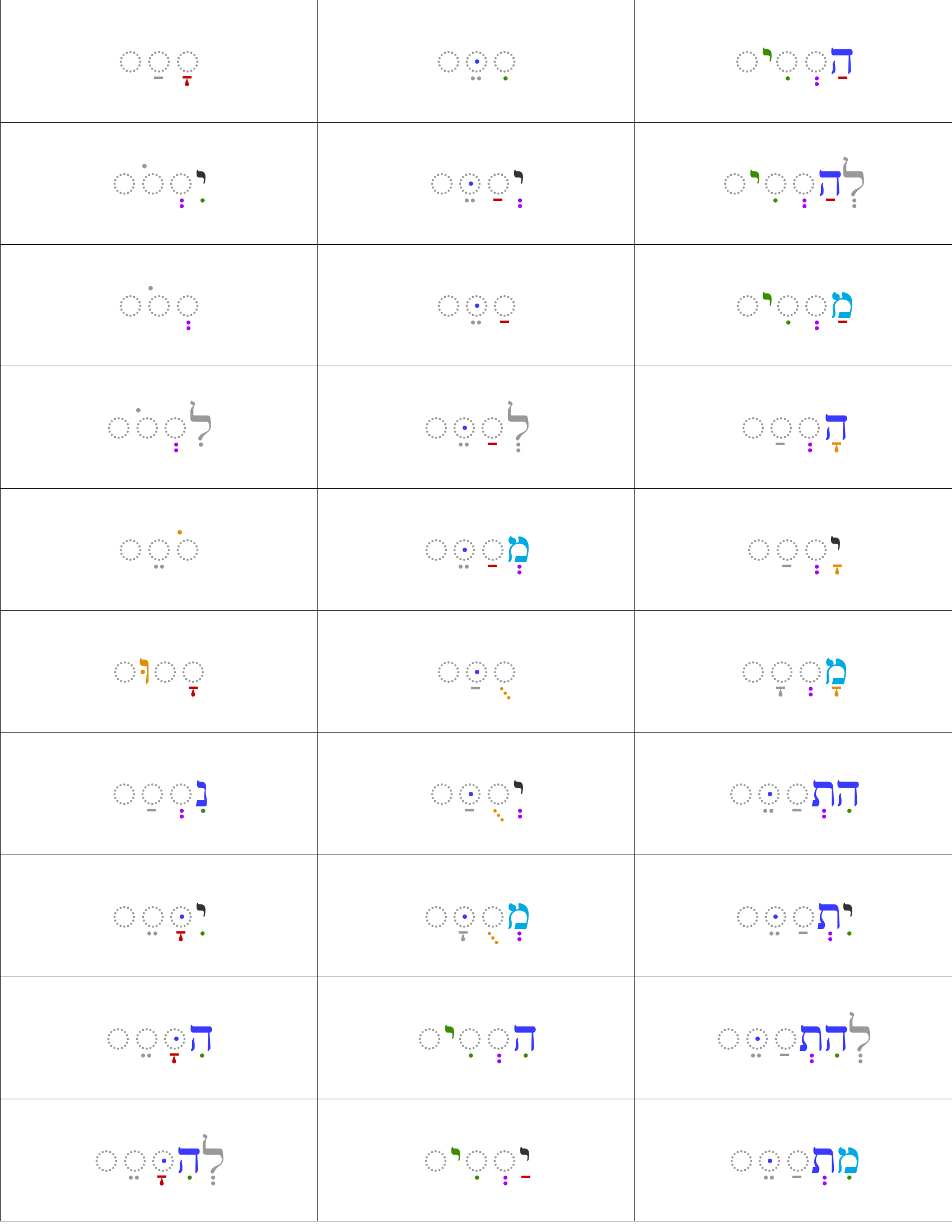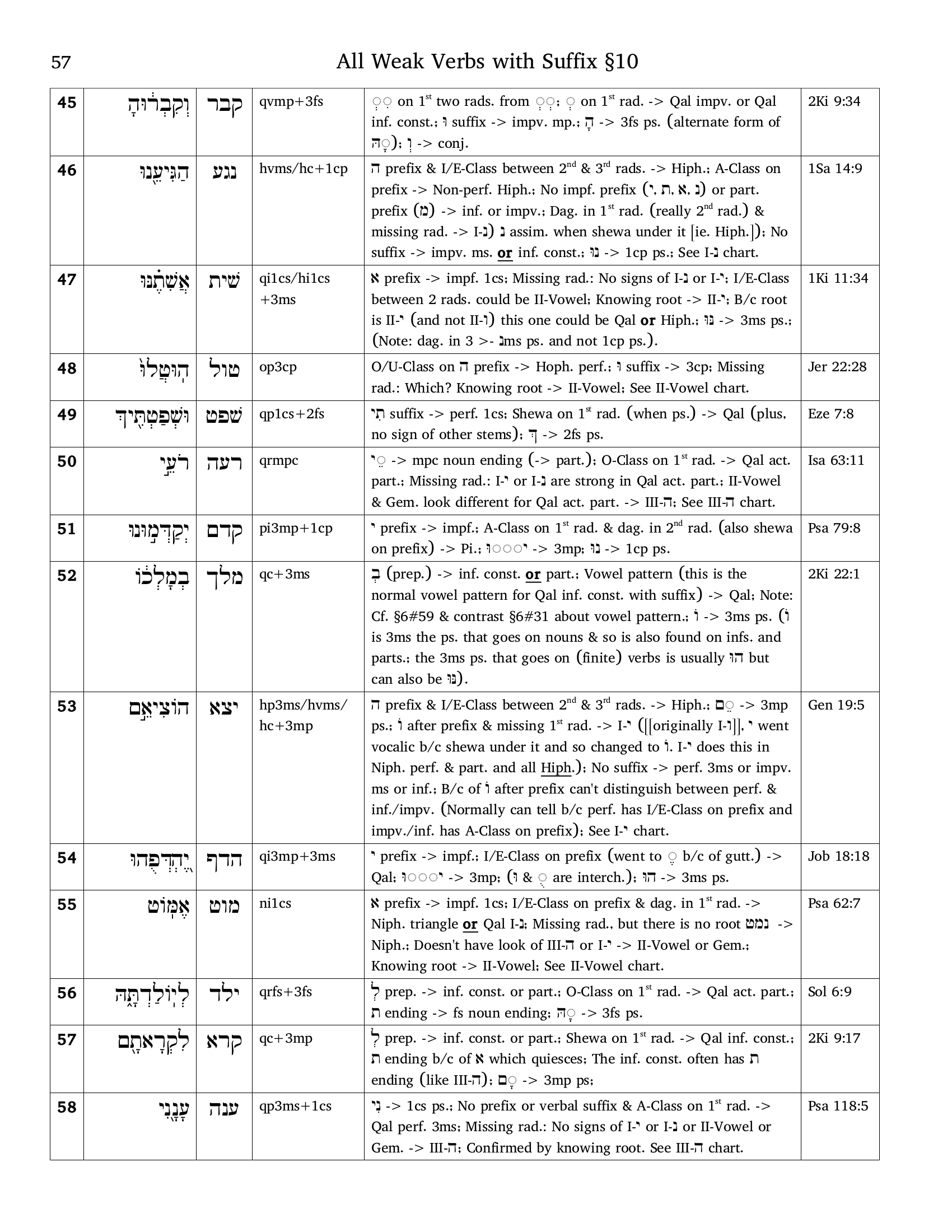
Greek and Hebrew Workbooks
Linguistic tools for learning Greek and Hebrew
Background
These two chart books are the culmination of several years of teaching Biblical Hebrew and Greek and seeking to do so from a linguistic perspective.
Methodology
Many students who have started learning a Biblical language have been overwhelmed by the mass of information that needs to be committed to memory. As this author has endeavored to teach the Biblical languages, he has sought to present information in such a way that allows the students to acquire the language, rather than to cram it into his or her mind by rote. This author has been well taught that the two aspects of a language that need to be mastered in order to read in that language are parsing and vocabulary. Vocabulary can be tackled through the use of vocab cards (and spending much time reading the biblical text once a sufficient base has been built). This book focuses on teaching the student how to learn to parse in a natural manner. Rather than memorizing the verbal paradigms, the keys (technically, morphemes) are learned which allow the student to parse the verbs. For example, rather than rote memorizing luō, lueis, luei . . ., the student learns that the 's' suffix is the 2nd person masculine singular marker. Of course, these markers still need to be memorized, but this can be done in a much more natural way than by memorizing a chart. The key is to practice, practice, practice. And that's where this book comes in. The heart of this book is a series of ten graded (advancing in difficulty) parsing sheets with 72 words each for the student to practice parsing. Each of these ten parsing sheets is accompanied by explanations of what keys the student should have 'keyed' in on to parse the word.
Practice
How is the student supposed to get the keys into their mind in the first place? Flash cards and practice! Using flash cards and parsing 'real verbs' is a much more natural way to acquire the keys than by rote memorizing a chart. This author has seen far too many students have to write a chart out on the back of a test to be able to parse a single verb, rather than intuitively recognizing the keys. By using flash cards, the student directly associates the parsing of a verb with the keys that have been learned. There is no intermediate step involving a paradigm. The more the student practices, using the flash cards and the parsing sheets, the more the keys will be ingrained in the memory.
Greek Workbook
Hebrew Workbook
Table of Contents for Greek Chartbook
Introduction Philosophy 1 Recommended Resources 2 Abbreviations 3 The Theory §1 The Greek Alphabet 5 Diagram 1: Articulation 7 Chart 2: The Greek Alphabet 8 §2 Greek Morphology 9 Chart 3: Morpheme Positions in Inflected Forms 11 Chart 4: Quick Reference Guide to Greek Morphology 14 §3 Noun Endings 15 Chart 5: Noun Endings 16 §4 Third Declension Nouns 17 Chart 6: Third Declension Noun Paradigms 20 §5 Verbal Endings 21 Chart 7: Proto-Greek Endings 22 Chart 8: Verbal Endings 23 §6 Formation of Tense Stems 24 Diagram 9: Tense Derivation from the Root Chart 24 Chart 10: Formation of Tense Stems Chart 27 §7 ϝιδ 28 Chart 11: ϝιδ 29 §8 The Verbal System 30 Chart 12: The Verbal System 32 §9 Chart 13: Participles & Infinitives 33 The Practice Parsing Sheets §10 Nouns 34 §11 Present Indicatives 35 §12 Present & Imperfect Indicatives 36 §13 Present, Imperfect, & Future Indicatives 37 §14 Present, Imperfect, Future, and 1st Aorist Indicatives 38 §15 Present, Imperfect, Future, & Aorist Indicatives 39 §16 All Indicatives 40 §17 All Finite Verbs 41 §18 All Participles 42 §19 All Verbs 43 Explanations for Parsings §10 Nouns 44 §11 Present Indicatives 49 §12 Present & Imperfect Indicatives 53 §13 Present, Imperfect, & Future Indicatives 58 §14 Present, Imperfect, Future, and 1st Aorist Indicatives 63 §15 Present, Imperfect, Future, & Aorist Indicatives 69 §16 All Indicatives 75 §17 All Finite Verbs 81 §18 All Participles 87 §19 All Verbs 94 §20 Formation of Select Words Chart 14: εσ 100 Chart 15: σεχ 100 §21 Miscellaneous Charts Chart 16: Principle Parts from Different Roots 101 Chart 17: A-Grade and O-Grade Vowel Shifts for Past Tenses 101 Chart 18: How the Prepositions Change Depending on the Follow Letter 101 §22 Greek-English Cognates 102
Table of Contents for Hebrew Chartbook
Introduction/Philosophy 1 Abbreviations 3 Explanation of the Colors 4 The Theory Summary of Parsing Keys 5 Summary of Characteristics of Weak Verbs 7 Significant Exegetical Constructions Waw conjunctions 8 Infinitives 10 Participles 11 Verbal Stems 12 The Practice Parsing Sheets 13 Explanations for Parsings 23 Color Charts The Alephbet 59 The Strong Verb 60 Weak Verbs 61 Flash Cards The Verbal Affixes Flash Cards 68 The Strong Verb Flash Cards 70 The Pronominal Suffixes Flash Cards 72

